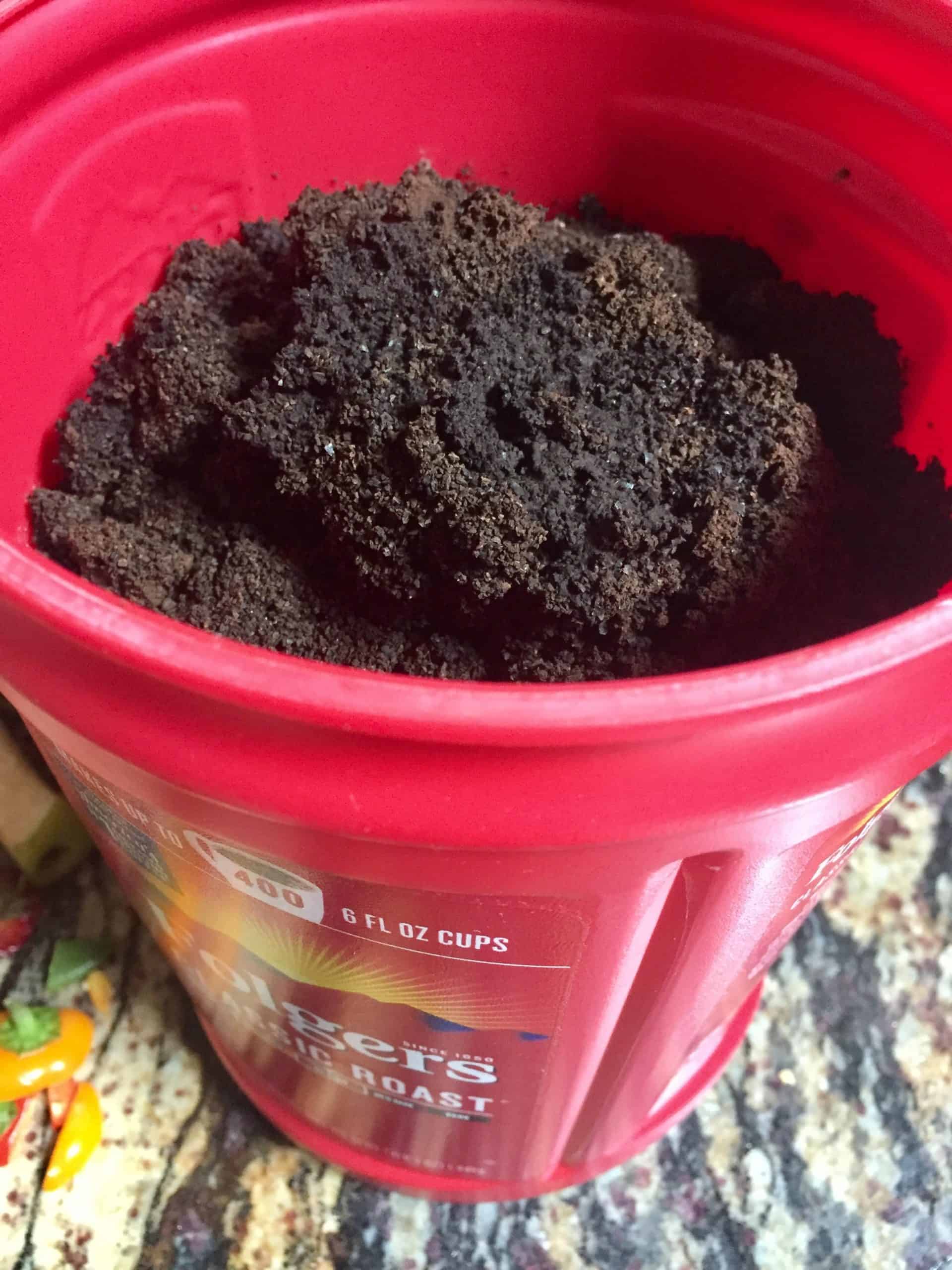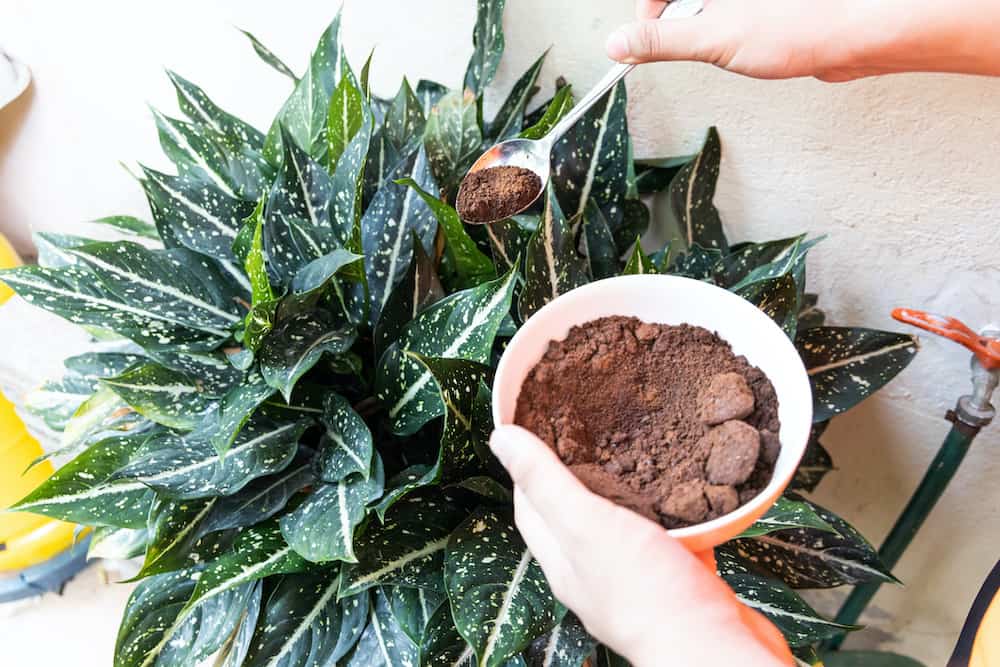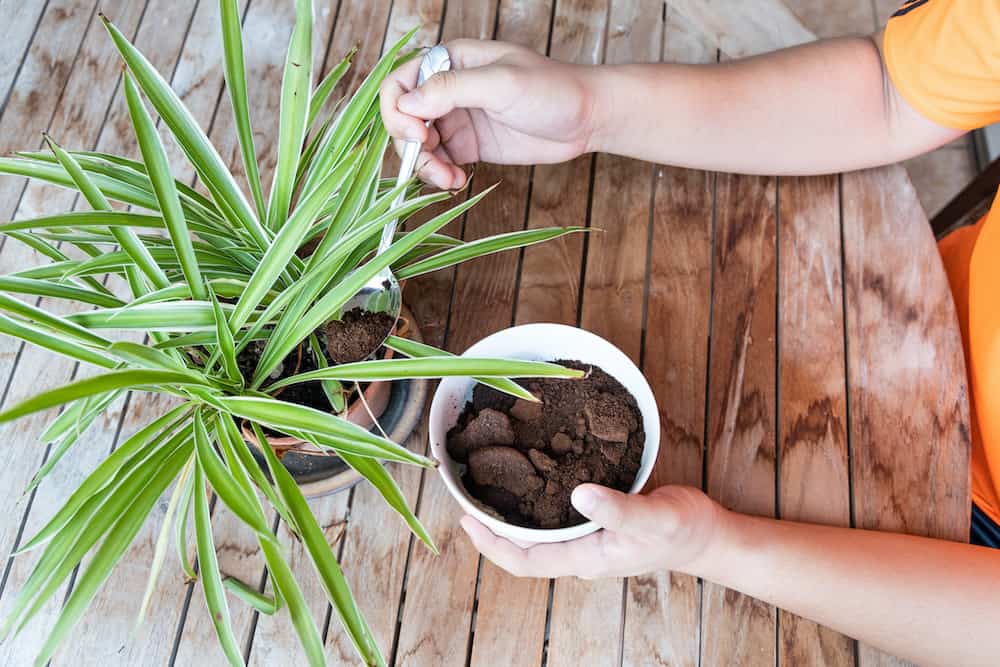Coffee grounds for plants seem to be the new “it” thing when it comes to innovative ways to invigorate your garden. Yet gardeners have been using coffee grounds for generations.
We’ve heard all kinds of tales about the ways to use coffee grounds for plants. Some of these include keeping slugs away, using them as fertilizer, and as a substitute for mulch… the list goes on.
People have also reported horror stories about using coffee grounds in the garden. We’ve heard stories of them burning plants, clogging soil, and killing seedlings. Sometimes it seems they do nothing at all.
Sometimes you have to experiment in your garden. However, it can also be nerve-wracking to incorporate something new, especially one that seems controversial.
Here’s our take on the myths vs realities of using coffee grounds for your plants.
Coffee Grounds for Plants: How to Use Coffee Grounds Garden
Are coffee grounds good for plants? The short answer is yes. The long answer really depends on:
- How much you use
- Where you use it
- For what purpose
As with anything in life, balance and moderation are the keys to success, and in the garden, it is no different.
Too much of anything will be harmful to your plants, and nature will do everything in its power to get back to an equilibrium.
That said, we aren’t all blessed with enriched, well-balanced, and well-draining soil. We have to give our garden a little TLC so that it can function at its best.
Using coffee grounds in the garden is a promising idea because they are so nutrient-rich, especially in nitrogen.
They are also in abundance and very easy to find. If you make coffee at home, you can use the grounds. If you don’t, you can ask a neighbor to save their coffee grounds for a few days.
Also, most coffee houses will gladly give you some used coffee grounds.

What is the best way to use coffee grounds in your garden?
Important things to know about using coffee grounds for plants is that coffee grounds are finely textured and easily compacted.
When using them, you want to be sure they don’t create a barrier to moisture and air movement There are all kinds of uses for coffee grounds in the garden.
1. As Compost
Perhaps the best use of coffee grounds is in compost. Adding coffee grounds to your compost pile or compost tumbler and then adding the compost to your garden is one of the best ways to use coffee grounds in the garden.
Since they are rich in nitrogen, the grounds promote microbial activity in the compost bin.
Coffee grounds are a green compost. You will need to balance them with brown compost, such as dried leaves and straw.
When you enrich your compost with coffee grounds, and then add them to the garden, all of your plants will benefit. It’s also a sustainable way to garden.
2. Added to Worm Bins
If you have a worm bin, used coffee grounds are a great addition. Earthworms especially love coffee grounds, so load them up with your leftovers.
Earthworms will consume the coffee grounds and deposit them in the soil. This helps improve soil structure in terms of increased aggregation.
Worm Farm – Should You Start One?
3. As Fertilizer
Coffee grounds are said to be good fertilizer because they are rich in nitrogen, which they release into the soil. Nitrogen is one of the key nutrients plants need to survive, so this added nitrogen is thought to be a benefit.
Adding coffee grounds directly to your garden will not immediately release nitrogen into the soil. However, adding coffee grounds will increase the organic material in your garden, which is great for both water retention and drainage of your soil.
As such, instead of putting coffee grounds directly into the soil, if possible, throw them in your compost first.
4. As Mulch
Mulch can be expensive and a hassle to buy because you need so much of it to cover your garden properly.
Since most households have plenty of leftover coffee grounds, many have suggested using ground coffee in gardens in place of mulch.
You can use coffee grounds as mulch. Spread the grounds on the soil and cover with leaves, compost or coarse organic mulch such as wood chips or bark mulch.
Note, to be successful, you can’t lay the coffee grounds on too thick. Ideally, coffee ground mulch should be no more than half an inch thick. Keep it away from the stems.
People who have bad experiences using coffee grounds as mulch tend to heap it on too thick. Doing so makes the soil too compacted and provides opportunity for mold growth by preventing proper drainage.
When mixed with other organic material and raked over gardens, coffee grounds do not clump up and will not clog your soil.
If you decide to try using coffee grounds as mulch, we suggest mixing them with compost first or raking the coffee grounds over your garden to break up any clumps. By using these methods properly, coffee grounds in the garden can be a good substitute for mulch.
5. As Pesticide
Another common proposed use for coffee grounds in plants is as a pesticide. Slugs, snails, and other common garden pests are said to detest caffeine.
Maybe using coffee grounds will be a perfect solution to keeping these critters away from your plants.
That said, there are experiments conducted to test this theory. However, most have shown that coffee grounds do not keep out slugs or snails.
While they are repelled by caffeine, coffee grounds contain such a low amount of caffeine that spreading them in your garden is not effective in this regard.
6. Keep Pets Out of the Garden
We don’t recommend adding coffee grounds to gardens to keep pets away. Anyone with a dog or a cat knows how much effort it can be to prevent them from digging around in the garden and destroying plants.
Without having to put up fences around every plant, people have floated the idea of using coffee grounds as a means to keep your fluffy friends away from your precious plants.
The problem with this “solution” is that caffeine is particularly harmful to dogs. Even though used coffee grounds have a very low dosage of caffeine, it is probably best not to risk it.

FAQs
1. Can I Use Coffee Grounds in My Vegetable Garden?
Go for it! While you should avoid putting clumps of coffee grounds all over your vegetable garden, when used appropriately, using coffee grounds for your plants can be really beneficial.
As we have shown, the best method of using coffee grounds for your plants is by putting the grounds in your compost. Let them decompose into organic material that will then be spread in your garden.
2. What Plants Can I Add Coffee Grounds To?
It isn’t so much a question of which plants like used coffee grounds or which plants do not like coffee grounds. Used coffee grounds won’t actually add that many nutrients to your soil when placed directly in your garden.
It is also worth noting that coffee grounds contain nitrogen. This means that if you have plants that prefer a closer carbon-to-nitrogen ratio, adding coffee grounds to these plants will not do them any favors.
However, since all plants need nitrogen to survive, putting coffee grounds in the compost will benefit all plants in your garden!
For this reason, the best method for using coffee grounds for plants is by putting it in your compost or worm bin, if you have one. By doing this, the coffee grounds be beneficial for all of your plants. In this way, you don’t have to worry about whether your plants will like coffee grounds on their own.
Certain plants will thrive with it, however, You can toss some in the soil when growing lettuce, blueberries, radishes, and carrots.
3. What Do Coffee Grounds Do for Plants?
Coffee grounds can benefit poor soil by improving the soil’s tilth and structure. Coffee grounds are 2% nitrogen by volume. They will help add nitrogen to the soil.
4. Are Coffee Grounds Too Acidic for Plants?
The grounds themselves aren’t acidic. In actuality, the acid in coffee is water-soluble so the acid is mostly in the coffee. Most coffee grounds are close to pH neutral: between 6.5 to 6.8 pH.
5. Can You Put Too Much Coffee Grounds in Your Garden?
Yes, you absolutely can, which is why it is often better to put coffee grounds into your compost or worm bin, instead of directly in your garden.
If you’ve ever felt the texture of used coffee grounds, you will know that they have a propensity to clump.
Their particles are very fine. When water is added because of watering by using a garden hose nozzle or bucket, or even due to rain, in large quantities, it causes them to become one large coffee ground mass.
You can imagine that having these clumps in a garden would be disastrous for water drainage and aeration of your soil.
For this reason, if you will use coffee grounds on your plants by putting them directly in your garden, do so sparingly. Use a rake to separate the particles into finer bits.
6. What Is the Best Way to Use Coffee Grounds for Plants?
Coffee grounds are rich in nutrients, so they are the perfect candidate for composting. Be aware that they still count as green compost. This means they will need to be balanced by dry leaves, twigs, cardboard, or any other brown compost.
Worms also love coffee grounds. So if you have a worm bin, throw your grounds in there. Let the worms do the work for you!
Coffee grounds for plants
It’s sustainable to keep coffee grounds out of landfills by using them in gardens. Coffee grounds are beneficial as compost and will enrich the soil with nitrogen.
This is the best way to utilize used coffee grounds as they are beneficial for your garden.
Since they are high in organic material and rich in nutrients, using your coffee grounds in either your compost or your worm bin is a great way to maximize their potential in your garden.
Things to consider about coffee grounds in gardening
The problem with putting coffee grounds directly in the garden is their tendency to clump. They can prevent your soil from draining properly.
If you can avoid this, it is not a problem. However, it won’t do much to increase the vitality of your soil when added this way.
Just like with coffee grounds in the garden, you need to keep your compost balanced.
If you are adding coffee grounds every day to your compost pile but aren’t balancing them out with the correct ratio of browns, they will offset the balance. Be sure to compost the paper coffee filter.
Another thing to consider is that even though used coffee grounds contain minimal amounts of caffeine, this could still be detrimental to pets when spread directly onto a garden.
In addition to pets, caffeine might also suppress plant growth. So if you do decide to use it as a fertilizer, avoid putting grounds on seedlings.
Still, there are many ways to use coffee grounds for plants. We recommend adding the grounds to compost piles and worm bins.

